Directions (1-5): In each question two equations numbered (I) and (II) are given. You have to solve both the equations and mark appropriate answer.
Q1. I. 2x² – 17x + 36 = 0
II. 3y² – 22y + 40 = 0
(a) If x<y
(b) If x>y
(c) If x≥y
(d) If x≤y
(e) If x=y or no relation can be established.
Q2. I. x² + 21x + 108 = 0
II. y² + 14y + 48 = 0
(a) If x<y
(b) If x>y
(c) If x≥y
(d) If x≤y
(e) If x=y or no relation can be established.
Q3. I. 2x² + 7x – 60 = 0
II. 3y² – 28y + 64 = 0
(a) If x<y
(b) If x>y
(c) If x≥y
(d) If x≤y
(e) If x=y or no relation can be established.
Q4. I. x² – 2x – 24 = 0
II. y² + 3y – 40 = 0
(a) If x<y
(b) If x>y
(c) If x≥y
(d) If x≤y
(e) If x=y or no relation can be established.
Q5. I. 4x² + 27x + 45 = 0
II. 5y² + 42y + 88 = 0
(a) If x<y
(b) If x>y
(c) If x≥y
(d) If x≤y
(e) If x=y or no relation can be established.
Directions (6-10):- What approximate value will come in place of question mark (?) in the following questions. (You are not expected to find the exact value)


Q8. 119.022+40.99+9.03=?²
(a) 10
(b) 13
(c) 17
(d) 8
(e) 16
Q9. 58.99+52.11-47.94+ ?=85.96
(a) 27
(b) 19
(c) 23
(d) 15
(e) 30
Q10. (14.96)²+(5.011)³+50.02=?²
(a) 28
(b) 16
(c) 25
(d) 12
(e) 20
Directions (11-15):- Each of the following questions is provided with 2 statements i.e. Statement I & Statement II. You have to study them and find which statement (s) is/are necessary to answer the question as per the instruction set given below.
Q11. What is value of a²+b²?
Statement I: 50% of a is 25% of b.
Statement II: 30% of a is 15.
(a) Only Statement I is sufficient to give the answer of the question
(b) Only Statement II is sufficient to give the answer of the question
(c) Neither Statement I nor Statement II is sufficient to give the answer of the question
(d) Either Statement I or Statement II is sufficient to give the answer of the question
(e) Both Statement I & Statement II is sufficient to give the answer of the question
Q12. How many cars are there in the parking?
Statement I: if 10 cars more is parked, it will be twice of actual cars parked.
Statement II: there is a space for 10 more cars.
(a) Only Statement I is sufficient to give the answer of the question
(b) Only Statement II is sufficient to give the answer of the question
(c) Neither Statement I nor Statement II is sufficient to give the answer of the question
(d) Either Statement I or Statement II is sufficient to give the answer of the question
(e) Both Statement I & Statement II is sufficient to give the answer of the question
Q13. What is average age of P, Q & R?
Statement I: average age of P and R is 15 years.
Statement II: Q is 4 years younger to P.
(a) Only Statement I is sufficient to give the answer of the question
(b) Only Statement II is sufficient to give the answer of the question
(c) Neither Statement I nor Statement II is sufficient to give the answer of the question
(d) Either Statement I or Statement II is sufficient to give the answer of the question
(e) Both Statement I & Statement II is sufficient to give the answer of the question
Q14. What is speed of train? (in kmph)
Statement I: The train crosses a man standing at platform in 10 sec & it’s length is 100 m.
Statement II: The train covers a journey of 200 kms in 4 hours.
(a) Only Statement I is sufficient to give the answer of the question
(b) Only Statement II is sufficient to give the answer of the question
(c) Neither Statement I nor Statement II is sufficient to give the answer of the question
(d) Either Statement I or Statement II is sufficient to give the answer of the question
(e) Both Statement I & Statement II is sufficient to give the answer of the question
Q15. What is area of circle?
Statement I: the perimeter of circle is equal to perimeter of square.
Statement II: the perimeter of semicircle of same radius as of circle is 36 cm.
(a) Only Statement I is sufficient to give the answer of the question
(b) Only Statement II is sufficient to give the answer of the question
(c) Neither Statement I nor Statement II is sufficient to give the answer of the question
(d) Either Statement I or Statement II is sufficient to give the answer of the question
(e) Both Statement I & Statement II is sufficient to give the answer of the question
Solutions
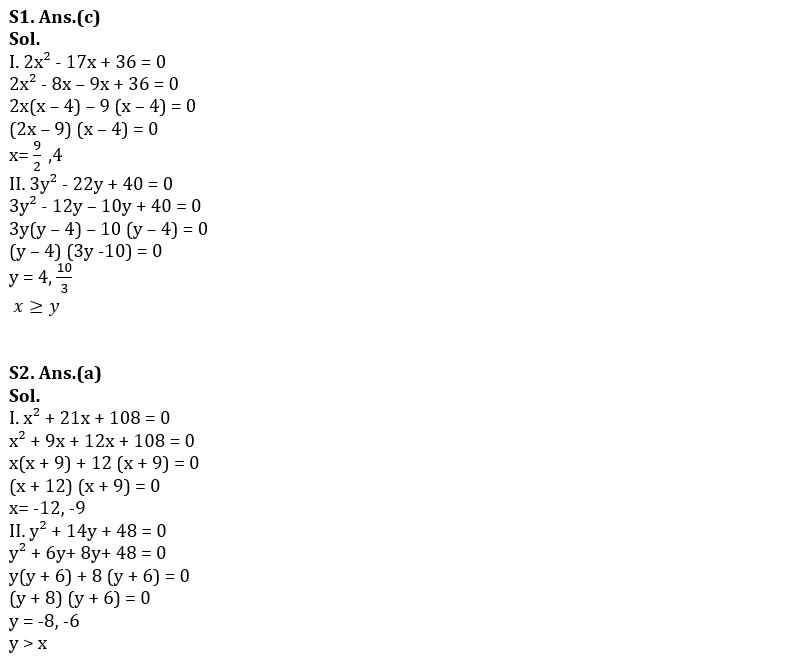
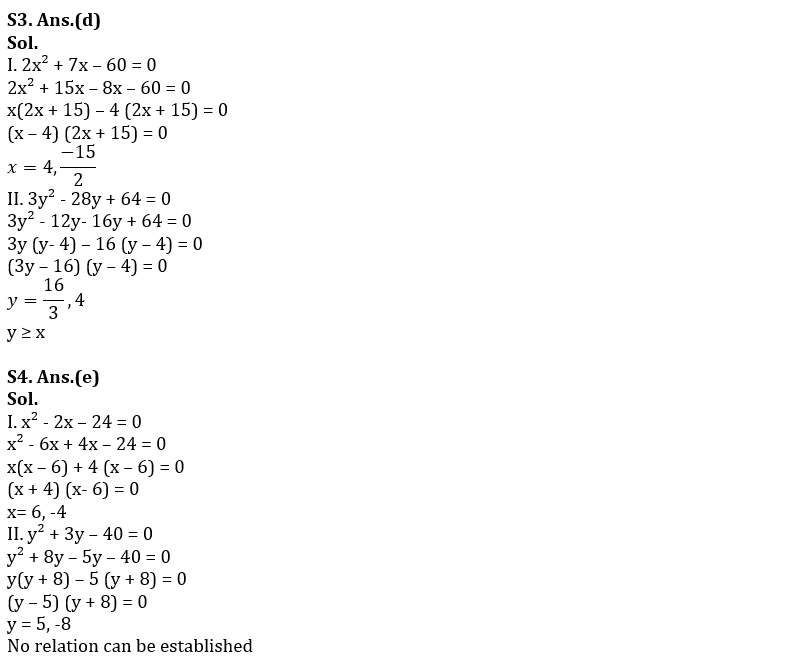
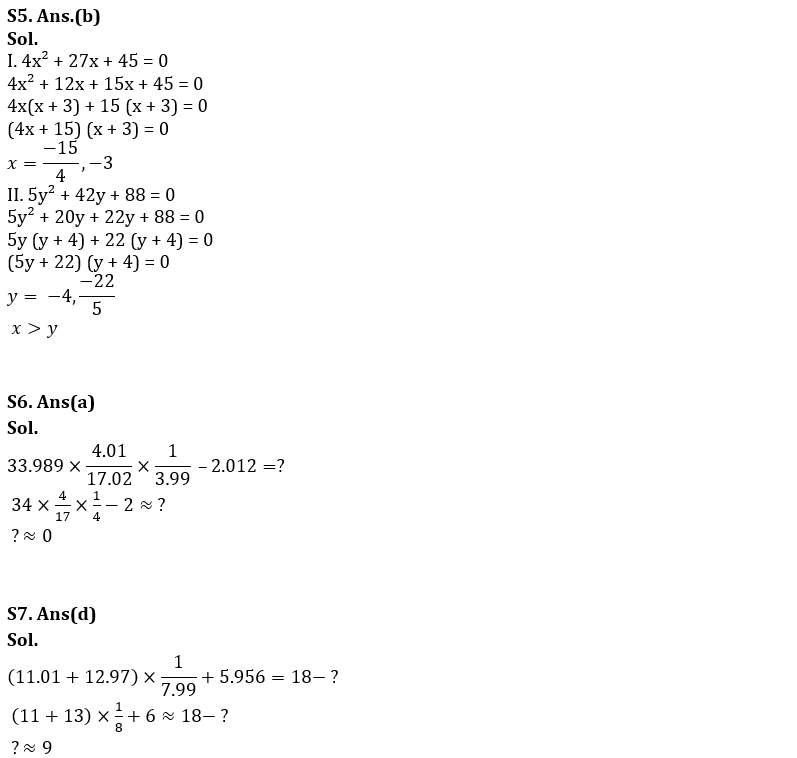
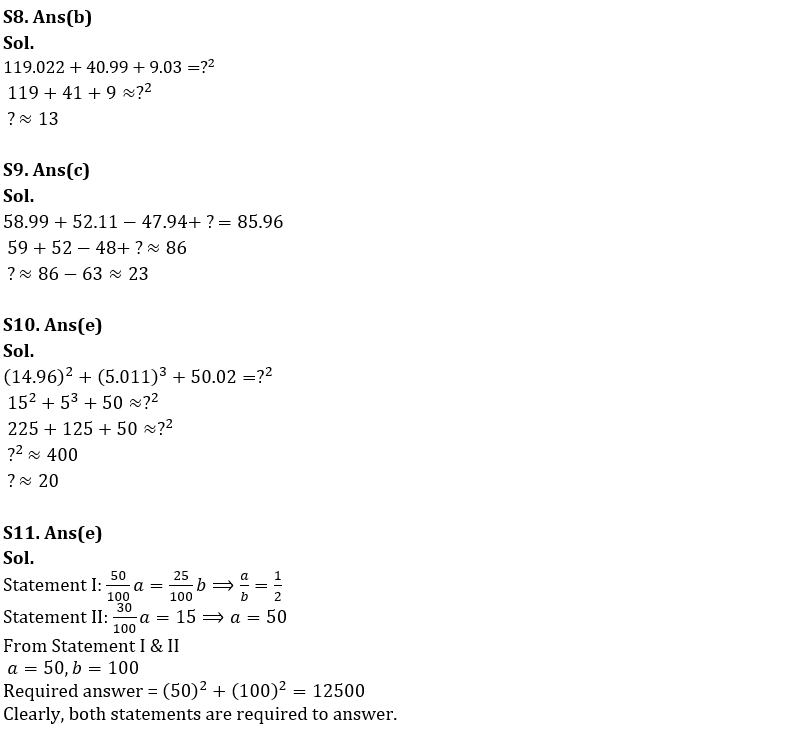
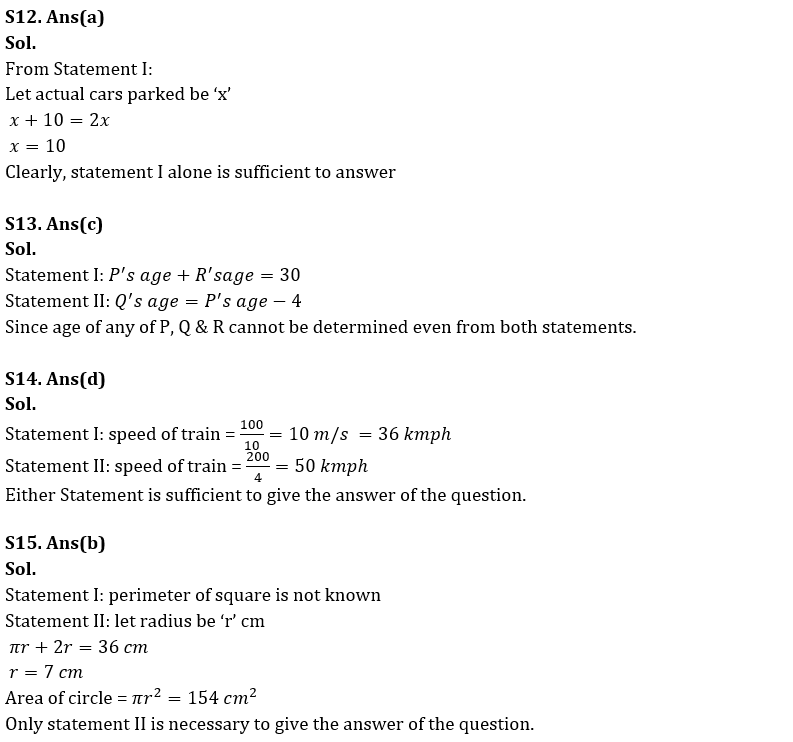


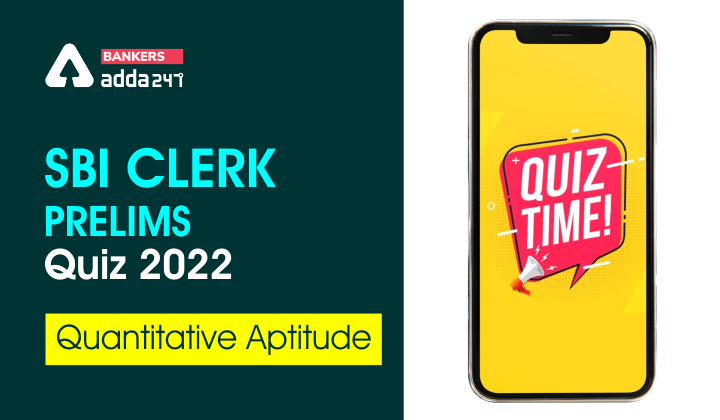


 GA Capsule for SBI Clerk Mains 2025, Dow...
GA Capsule for SBI Clerk Mains 2025, Dow...
 The Hindu Review October 2022: Download ...
The Hindu Review October 2022: Download ...
 30 Days Study Plan to Crack SBI Clerk 20...
30 Days Study Plan to Crack SBI Clerk 20...





